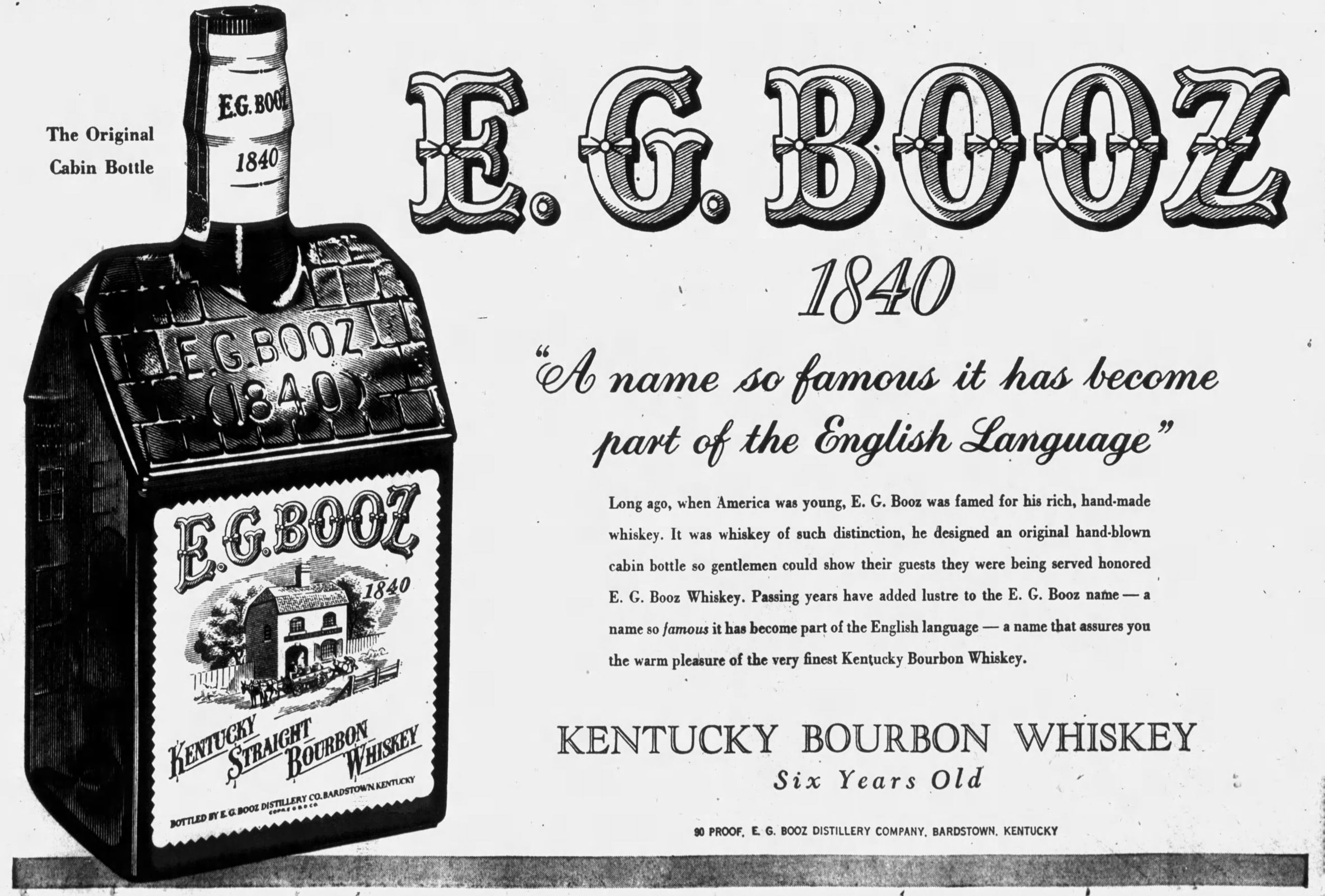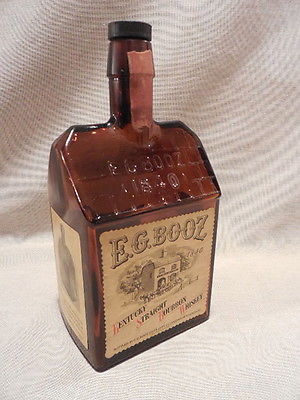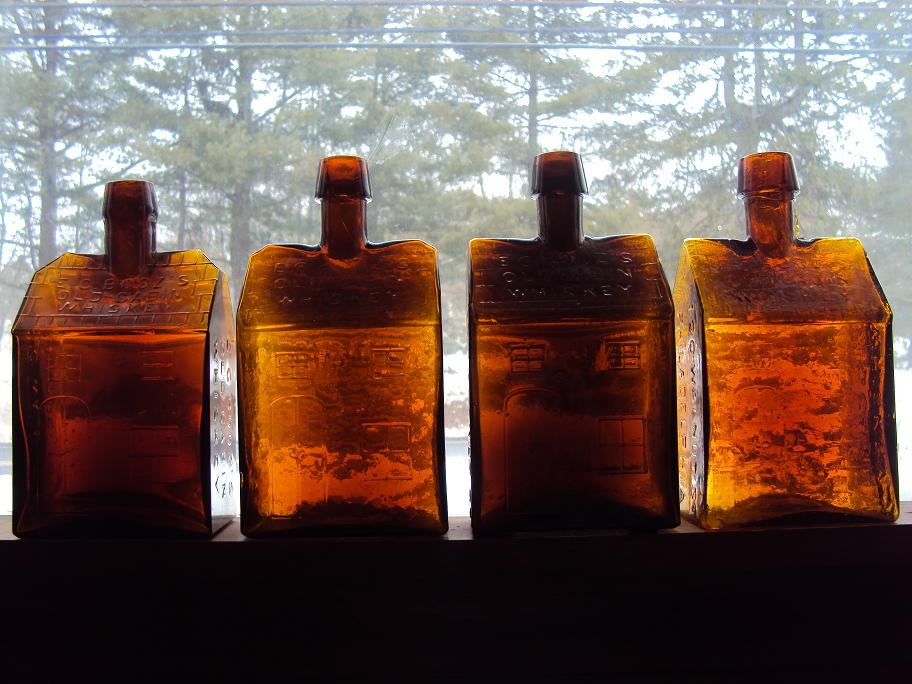Where does the word “booze” come from? Let’s look at the hazy origins of the word and what a Philadelphia whiskey retailer may have had to do with “booze” becoming slang.
Let me start by saying that it is an adaption of the middle Dutch word “būsen”, which means “to drink to excess”, into the middle English word “bousen” in the 14th century. The use of the English word “booze” didn’t appear in writing until the 17th century. There are other options for the possible origins of the word from Germany, but the Dutch seems the most likely. Though often dismissed, as a Philadelphian, I cannot dismiss the possibility that E.G. Booz had something to do with the term being used more often…
Edmund G. Booz was born in 1824 in Bristol, PA in Bucks County. He was a very successful liquor merchant that kept a shop at 120 Walnut Street in Philadelphia, Pennsylvania. His shop may have been there during the restructuring of the street numberings of the city in 1856 which, before that date, would’ve put that same address at 26 Walnut Street. (The city of Philadelphia renumbered all addresses and organized them into 100 block increments to simplify things.) I only mention the restructuring of Philadelphia’s street addresses because Booz was most famous for his cabin shaped bottles which were not manufactured until 1858, but it is believed that Booz had his shop there before the changeover and any confusion may be the result of this sudden address discrepancy. Booz also owned property directly behind his business on 15 Granite Street in the Frankford section of the city, which was most likely his distillery or rectifying site. The location of his retail business was right next to Whitney Glass Works’ Philadelphia retail location at 118 Walnut Street. (Their manufacturing plant was in Glassboro, NJ. You’ll never guess what type of manufacturing Glassboro was famous for…) If you’re familiar with Philadelphia, 118-120 Walnut Street is basically where the old Bookbinders restaurant used to be. Like Booz’s shop, many of Philadelphia’s liquor producers were located near the Delaware River to have access to shipping and ease the distribution of their goods. It was the Whitney Glass Works that made those cabin bottles designed for Booz that became so famous and recognizable throughout the Delaware Valley.
Today, E.G. Booz’s glass cabin bottles are some of the most expensive and sought after glass bottles available on the collector’s market. There are a lot of stories about the origin of the bottle, let alone the word “booze”, but most of them are probably not true. One story starts with the presidential campaign for William Henry Harrison, during which a few sayings were supposedly coined. ”Keep the ball rolling” is said to have come from Harrison supporters who literally rolled a ball made of paper and tin covered with Harrison slogans for hundreds of miles during the presidential campaign. (I would’ve liked to have seen that!) The other was that the word “booze” became slang because Harrison supporters handed out E.G Booz bottles to get people to vote for him. This is partly believable because plenty of whiskey was handed out to voters by politicians to win their votes, though it would NOT have been handed out in glass bottles because of how much that would have cost the retailer to do! (It’s more likely that barrels were tapped and bottles were made available for purchase.) Though Harrison was a wealthy man, his supporters wanted to spin it that he was a down-home boy that would rather sit on his log cabin’s front porch drinking whiskey than run for President! I like to believe that Booz was a savvy business man that used Harrison’s story to sell his whiskey. A glass mold from Whitney Glass Works in the shape of a cabin, his name emblazoned on the roof, and a good story for the common drinking man would certainly have helped move product! (The mold is actually a perfect replica of a common glass workers’ home in Glassboro- 2 story, 4 room home- and doesn’t look much like a log cabin at all!) Another brilliant Philadelphia business man, indeed!
Most bottles of E.G.Booz that people find at auction or in antique stores are not originals. They are reproductions made in the 1950s by one of the distillers in Bardstown, Kentucky to sell bourbon. Those bottles have 1840 emblazoned on the roof, the year of Harrison’s presidential race. The originals do not have a date- because why would they anyway? The problem with the 1950’s bottles including the 1840 date was that the bottles weren’t made for Edmund Booz until 1858. Though Booz probably had his shop on Walnut Street long before 1858 when the bottles were made, he could not have been making those bottles in 1840, as he was only 16 at the time! The inclusion of 1840 on the roof of the glass cabin was simply a modern marketing gimmick. Of course, it probably would have suited E.G.Booz just fine to fudge the facts if it sold his whiskey:)

Whether the story is true that the word “booze” came from E.G.Booz or not isn’t really the issue. It certainly did not originate with him, but chances are it helped make it part of the Philly vernacular! He’s now a part of Philadelphia distilling history and you can always pop by and visit him at the Laurel Hill cemetery in the East Falls neighborhood of the city where he is buried. I like to think of Mr. Booz’s marketing savvy when I see new “misleading” whiskey labels today…

You can look into the fakes vs. the real bottles by reading Tippecanoe and E.G.Booze Too! by Thomas Haunton.

